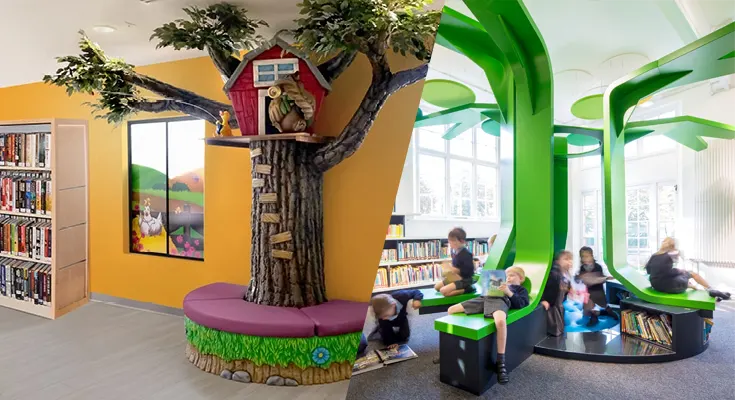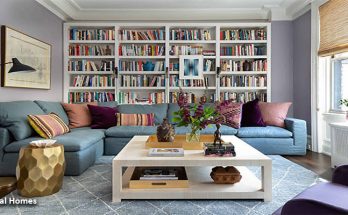In the dynamic landscape of education, school libraries play a pivotal role not just as repositories of knowledge but as vibrant hubs fostering creativity, collaboration, and a love for learning. Modern school library interior design goes beyond mere functionality; it aims to inspire students, encourage exploration, and provide a comfortable and stimulating environment conducive to both focused study and interactive learning experiences. Here are several innovative design ideas that promote creativity and enhance the learning environment in school libraries.
Flexible and Adaptable Spaces
One of the key principles of modern school library design is flexibility. Gone are the days of rigid, fixed furniture arrangements. Instead, libraries are embracing adaptable spaces that can be easily reconfigured to accommodate different activities and learning styles. Incorporating movable furniture such as modular tables and chairs allows for seamless transitions between individual study, group work, and collaborative projects. Flexible seating options like bean bags, reading nooks, and standing desks cater to diverse student preferences and promote a sense of comfort and ownership over their learning environment.
Integration of Technology
Technology is an integral part of modern education, and school libraries are at the forefront of integrating digital resources seamlessly into their design. Providing ample access to computers, tablets, and interactive displays encourages digital literacy and enhances research capabilities. Designing tech-friendly spaces with integrated charging stations, Wi-Fi connectivity, and multimedia areas supports both individual exploration and collaborative learning through digital platforms and resources.
Creative Zones and Maker Spaces
To nurture creativity and innovation, modern school libraries are carving out dedicated spaces for hands-on learning and creation. Maker spaces equipped with tools like 3D printers, robotics kits, art supplies, and crafting materials empower students to experiment, design, and prototype their ideas. These areas not only support STEAM (Science, Technology, Engineering, Arts, and Mathematics) initiatives but also foster critical thinking, problem-solving skills, and entrepreneurial spirit among students.
Natural Light and Biophilic Design
Natural light is known to have a positive impact on mood, productivity, and overall well-being. Incorporating large windows, skylights, and glass walls in school library design maximizes daylight penetration, reduces energy consumption, and creates a bright and inviting atmosphere. Biophilic design principles further enhance the connection to nature by integrating indoor plants, green walls, and natural materials like wood and stone. These elements promote a sense of calm, creativity, and concentration among students, fostering a conducive environment for learning and reflection.
Interactive Learning Zones
Modern school libraries are embracing interactive learning zones that encourage active engagement and collaboration. Designating areas for virtual reality experiences, storytelling corners with interactive displays, and multimedia presentation spaces stimulates curiosity and imagination. Incorporating movable whiteboards, writable surfaces, and brainstorming walls encourages students to brainstorm ideas, visualize concepts, and share their knowledge with peers in innovative ways.
Ergonomic and Comfortable Seating
Comfortable seating is essential for creating a welcoming and productive learning environment in school libraries. Ergonomically designed chairs and seating options that support good posture and comfort during extended study sessions are prioritized. Providing cozy reading corners with comfortable sofas, bean bags, and cushions encourages relaxation and enjoyment of literature, while adjustable furniture accommodates students of different ages and sizes, promoting inclusivity and accessibility.
Modern school library interior design is evolving to meet the changing needs and expectations of 21st-century learners. By incorporating flexible and adaptable spaces, integrating technology, fostering creativity through maker spaces, maximizing natural light with biophilic design, creating interactive learning zones, and prioritizing ergonomic comfort, school libraries are transforming into dynamic hubs that inspire creativity, collaboration, and lifelong learning. These innovative design ideas not only enhance the educational experience but also empower students to explore their passions, expand their knowledge, and thrive in an increasingly interconnected world.




